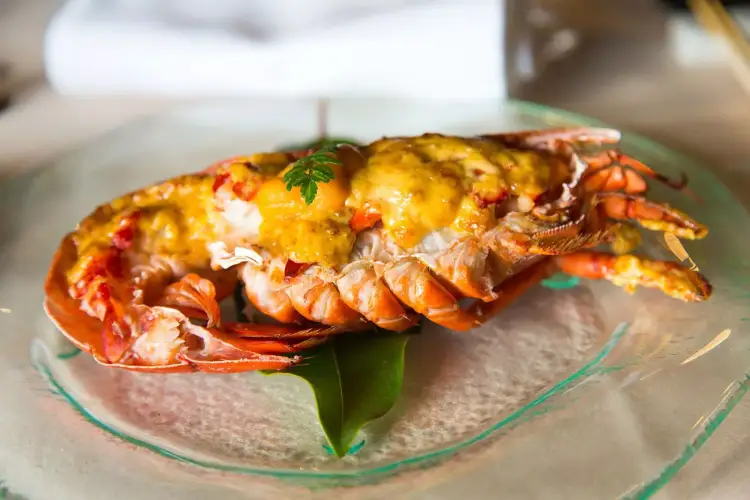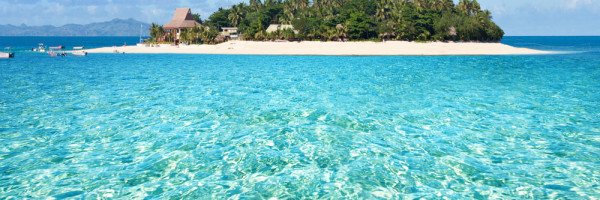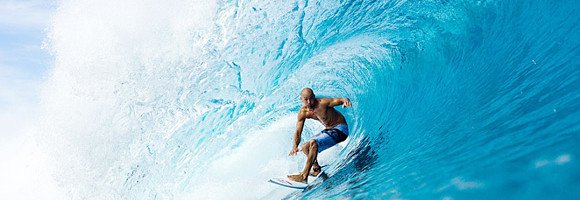Understanding the Cultural Landscape of Fiji
Fiji’s art scene is a vibrant tapestry woven from its rich cultural heritage and the influences of modern artistic movements. The Fijian islands are known for their deep-rooted traditions, which include weaving, carving, and ceremonial arts. Traditional Fijian art often revolves around community, spirituality, and the natural world, with artists drawing inspiration from their surroundings. This cultural landscape provides a backdrop for the emergence of contemporary art forms that challenge and expand upon conventional themes. In recent years, festivals like the Fiji Art Festival have become crucial platforms for showcasing this dynamic intersection of modern and traditional art. Artists from diverse backgrounds gather to celebrate their crafts, share techniques, and engage with the public through workshops and exhibitions. This blending of styles not only honors Fiji’s artistic roots but also fosters innovation, encouraging local artists to experiment with new mediums and ideas. The cultural festivals in Fiji provide an opportunity for artists to collaborate and learn from each other. For instance, New Zealand artists have been known to participate in these festivals, sharing their own experiences and artistic practices, which often include Māori influences. The exchange of ideas fosters a greater understanding of the Pacific art scene, allowing for a rich dialogue between tradition and modernity.Prominent Festivals Celebrating Art in Fiji
The Fiji Art Festival stands out as a beacon of creativity and cultural exchange in Fiji. Held annually, this festival draws artists, curators, and art enthusiasts from around the globe, creating an environment ripe for collaboration and learning. The event showcases a variety of artistic expressions, from traditional crafts to contemporary installations. During the festival, attendees can expect a range of activities, including live demonstrations, workshops, and panel discussions featuring both local and international artists. The blending of modern and traditional art forms is particularly evident in collaborative projects where artists work together to create pieces that reflect both their cultural heritage and contemporary influences. In addition to the Fiji Art Festival, other events such as the Hibiscus Festival also highlight the importance of art in community engagement. These festivals not only promote tourism but also serve as a reminder of the vital role that art plays in the cultural identity of the Fiji Islands. New Zealand artists participating in these events often bring a fresh perspective, incorporating their own cultural narratives into collaborative works that resonate with Fijian themes.Exploring Traditional Art Forms in Fiji
Traditional art forms in Fiji are integral to understanding the nation’s cultural identity. Techniques such as Tapa cloth making, wood carving, and pottery have been passed down through generations, each carrying its own stories and significance. Tapa, made from the bark of trees, is particularly noteworthy for its intricate designs and patterns that often reflect the natural environment and social structures of Fijian life. During festivals, traditional artisans showcase their skills, allowing festival-goers to witness the meticulous process of creating these artworks. Workshops offer hands-on experiences, where participants can learn about the materials and techniques used in traditional crafts. This interactive approach not only promotes the preservation of these art forms but also encourages a deeper appreciation for the cultural narratives they embody. New Zealand, with its own rich Māori art traditions, shares similarities with Fijian art in terms of storytelling through visual mediums. Artists from both regions can draw inspiration from each other, creating works that honor their respective heritages while exploring contemporary themes. The exchange of knowledge at events like the Fiji Art Festival cultivates a greater understanding of the Pacific’s diverse artistic landscape.The Role of Contemporary Art in Fijian Society
Contemporary art in Fiji often serves as a reflection of societal changes, addressing issues such as climate change, social justice, and globalization. Artists are increasingly using their work to comment on the challenges faced by their communities, as well as to celebrate the resilience and beauty of Fijian culture. Festivals play a significant role in promoting contemporary art by providing a platform for artists to express their viewpoints and engage with audiences on pressing topics. Many contemporary Fijian artists incorporate traditional motifs and techniques into their work, creating a dialogue between the past and the present. This blending often results in thought-provoking pieces that challenge viewers to consider the complexities of modern life in the context of Fijian traditions. New Zealand artists, known for their contemporary practices that often address Indigenous rights and environmental issues, find common ground with Fijian artists. Collaborative projects during festivals can lead to powerful statements that resonate across the Pacific, fostering a sense of unity and shared purpose among artists from different backgrounds. The Fiji Art Festival becomes a melting pot of ideas, where contemporary art gains visibility and importance in the cultural narrative of Fiji.Community Engagement and Art Education
Community engagement is a vital aspect of the art festivals in Fiji, as they not only celebrate artistic expression but also emphasize education and awareness. Through workshops and interactive sessions, local and visiting artists share their skills with community members, fostering a sense of ownership and pride in their cultural heritage. Art education programs associated with these festivals often target youth, encouraging them to explore their creativity and learn about traditional techniques. By involving younger generations, festivals help ensure that traditional art forms are preserved and adapted to contemporary contexts. This educational component also promotes critical thinking, allowing participants to understand the broader implications of art in society. New Zealand’s approach to art education, particularly through initiatives that focus on Māori art practices, can serve as an example for developing similar programs in Fiji. Collaborations between Fijian and New Zealand artists can lead to innovative educational strategies that cater to the unique cultural contexts of both nations. The Fiji Art Festival can be a catalyst for such exchanges, creating lasting relationships that benefit the artistic communities involved.Promoting Tourism through Art Festivals
Art festivals in Fiji not only celebrate local culture but also play a crucial role in promoting tourism. By attracting visitors from around the world, these events showcase the islands’ artistic talents while stimulating the local economy. The unique blend of traditional and contemporary art forms provides tourists with a deeper understanding of Fijian culture, making their visits more meaningful. The Fiji Art Festival, for instance, offers a range of activities that appeal to both art enthusiasts and casual visitors. From art installations to cultural performances, attendees can immerse themselves in the diverse expressions of Fijian creativity. This cultural tourism not only benefits artists and artisans but also supports local businesses, hotels, and restaurants, creating a ripple effect throughout the community. New Zealand, known for its vibrant art scene, can take inspiration from Fiji’s approach to promoting art festivals as a means of enhancing tourism. Collaborative festivals that feature artists from both regions can attract a broader audience, fostering a sense of cultural exchange and appreciation. The Fiji Art Festival exemplifies how art can be a powerful tool for both cultural preservation and economic development.The Future of Art in Fiji: Embracing Innovation
As Fiji continues to evolve, so too does its art scene. The intersection of traditional and modern art forms presents exciting opportunities for innovation and experimentation. Artists are increasingly embracing technology and new mediums, exploring themes that resonate with contemporary audiences while remaining rooted in their cultural heritage. The future of Fijian art lies in its ability to adapt and respond to global challenges, such as climate change and social inequality. By harnessing the power of storytelling and visual expression, artists can raise awareness and inspire action within their communities. Festivals like the Fiji Art Festival will be essential in nurturing this creativity, providing a platform for artists to showcase their work and engage with diverse audiences. Collaboration with international artists, including those from New Zealand, can further enrich Fiji’s artistic landscape. By sharing ideas and techniques, artists can push the boundaries of their practices, leading to innovative works that reflect the complexities of the modern world. The future of art in Fiji is bright, as it continues to celebrate its rich traditions while embracing the possibilities of contemporary expression.FAQs
What is the Fiji Art Festival?
The Fiji Art Festival is an annual event that celebrates the rich cultural heritage and artistic expression of Fiji. It showcases a diverse range of artworks, performances, and cultural activities, bringing together both modern and traditional artists from across the islands.
How does the festival highlight the intersection of modern and traditional art?
The festival provides a platform for artists to blend traditional Fijian techniques and themes with contemporary art forms. This intersection is showcased through various exhibitions, workshops, and performances, allowing audiences to experience the evolving nature of Fijian art.
What types of art can be seen at the Fiji Art Festival?
Visitors to the Fiji Art Festival can enjoy a wide variety of art forms, including traditional crafts such as weaving and carving, as well as modern installations, paintings, and digital art. The festival aims to highlight the creativity and innovation of Fijian artists across different mediums.
Are there any educational components to the Fiji Art Festival?
Yes, the Fiji Art Festival often includes workshops, panel discussions, and artist talks aimed at educating attendees about both traditional practices and contemporary techniques. These educational components foster a deeper understanding of the cultural significance and evolution of Fijian art.
How do local communities engage with the festival?
Local communities actively participate in the Fiji Art Festival by showcasing their crafts, performances, and cultural heritage. This engagement not only promotes local talent but also strengthens community ties and raises awareness about the importance of preserving traditional art forms.
What impact does the Fiji Art Festival have on emerging artists?
The festival serves as a vital platform for emerging artists to gain exposure, network with established professionals, and showcase their work. This visibility can lead to opportunities for collaboration, mentorship, and further development of their artistic careers.
How can visitors make the most of their experience at the Fiji Art Festival?
Visitors can maximize their experience by attending a variety of events, including exhibitions, performances, and workshops. Engaging with artists, participating in discussions, and exploring the different art forms on display will provide a richer understanding of the cultural narratives conveyed through both modern and traditional art.
References
- Fiji Islands – A comprehensive resource on Fiji’s cultural heritage, including information about art and festivals that showcase the intersection of modern and traditional art.
- Artlink – An article discussing the evolving art scene in Fiji, highlighting recent festivals that celebrate both modern and traditional art forms.
- Fiji Times – Coverage of a recent art festival in Fiji that emphasizes the blend of traditional and contemporary artistic expressions.
- Culture Trip – An exploration of the evolution of Fijian art, focusing on how modern influences are integrated with traditional practices.
- Fiji Ministry of Culture and Heritage – Official government site providing insights into cultural initiatives, including festivals that promote both modern and traditional arts in Fiji.







